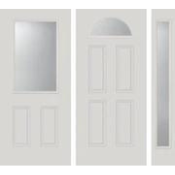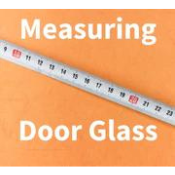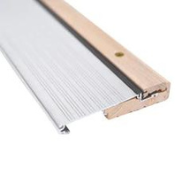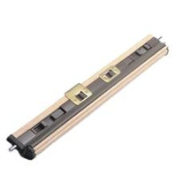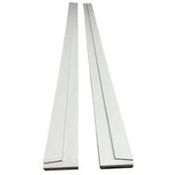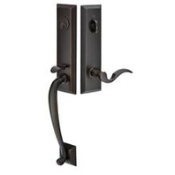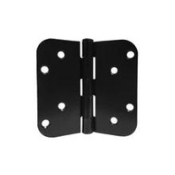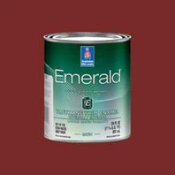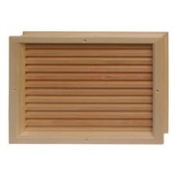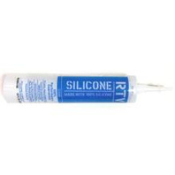
When it comes to designing or upgrading your home, don't underestimate the impact of energy-efficient doors. Your home’s front door is the first impression of your house and – in all likelihood – the most used door on your property. Everyone who enters your home does so through the front door, so it only makes sense to upgrade this door with an energy-efficient model ASAP. This guide will help you understand the benefits of energy-efficient front doors for homes and provide tips on how to choose the best one.
Key Takeaways
- Energy-efficient front doors can significantly reduce your energy bills and improve home comfort.
- Fiberglass doors with a polyurethane foam core are the most energy-efficient option available.
- Consider the weather in your area to choose the best insulation material for your door.
- Proper installation and regular maintenance are crucial for maintaining energy efficiency.
- Energy-efficient doors not only save money but also contribute to environmental sustainability.
Importance of Energy Efficiency with doors
Energy efficiency is a major factor when it comes to entry doors these days, as well as most features in your home. The point of energy efficiency is to help you have a comfortable, efficient home while using as little energy as possible. When it comes to electric appliances, this means saving money on your electric bills. When it comes to things like windows and doors, however, you’ll be able to save money on your heating and cooling bills.
-
What Makes a Front Door Energy Efficient?
Some key features and components of an energy-efficient door include:
- Insulating Materials: Energy-efficient doors are built with special materials like fiberglass, insulated wood, or composite materials. These materials are not great at transferring heat, which means they help maintain a consistent indoor temperature.
- Multiple Glazing: Layers of protection that enhance insulation and reduce heat transfer.
-
Weatherstripping: Seals around the door frame to prevent drafts and energy loss.
-
Best Materials for Insulation
Choosing the right materials is crucial for energy efficiency and sustainability in a front door. Some of the best materials include:
- Fiberglass: Known for its durability and excellent insulation properties.
- Insulated Wood: Offers a traditional look with modern energy efficiency.
-
Composite Materials: Combines the best features of wood and synthetic materials for superior insulation.
-
Benefits of Energy-Efficient Front Doors
- Enhanced curb appeal and property value.
- Significant savings on heating and cooling bills.
- Improved indoor temperature consistency.
- Reduced environmental impact.
The main advantage is improved energy efficiency, leading to lower utility costs. Modern windows and doors use advanced technologies for better insulation, making your home more comfortable and eco-friendly.

Design Features to Look For in Doors
When selecting Front Doors for Homes, it's essential to consider various design features that contribute to energy efficiency and overall performance. Here are some key aspects to look for:
-
Weather Resistance and Insulation
Plenty of thought is put into the design of energy-efficient doors. It is the design elements of such doors that shape their functionality, form, and longevity. Weatherstripping is added to energy-efficient doors to prevent the outdoor air, including harsh gusts of wind, from moving inward. This feature is crucial for maintaining a comfortable indoor environment and reducing energy costs.
-
Energy-Efficient Glass Options
Energy-efficient quality doors often incorporate specialized glass options that enhance insulation. These glass types include double or triple glazing, low-emissivity (Low-E) coatings, and gas fills like argon or krypton. These features help in minimizing heat transfer, thereby keeping your home warmer in the winter and cooler in the summer.
-
Style and Aesthetics
Choose a door that complements your home's architecture and your personal preferences. Energy-efficient doors come in different styles, so you can find one that suits your taste. Consider bold colors or contrasting finishes for a statement. Ensure seamless integration with your home's existing design elements for a cohesive look.
Thoughtful design in front door design ideas not only enhances energy efficiency but also adds to the overall curb appeal of your home.
Installation and Maintenance for Efficiency
-
Proper Installation Techniques

Correct installation is crucial for maintaining the energy efficiency of a door. Properly installed doors ensure that there are no gaps or air leaks around the frame. Follow these steps for a successful installation:
- Measure the rough opening: Ensure the door fits snugly into the space in the wall where it will be installed.
- Level the door: Make sure the door sits level vertically (plumb) and horizontally.
- Seal and insulate: Apply caulk around the exterior of the door frame to seal against weather. Install weatherstripping around the door to improve energy efficiency.
A door can’t perform efficiently if it’s not properly installed. Proper installation enhances security, efficiency, and overall appeal.
-
Regular Maintenance Tips
Maintaining your front door is essential for long-term energy efficiency. Here are some home renovation tips to keep your door in top shape:
- Inspect weatherstripping: Check for wear and tear and replace if necessary.
- Lubricate hinges and locks: Ensure smooth operation and prevent wear.
- Clean the door surface: Remove dirt and debris to maintain the door's appearance and functionality.
-
Check for gaps and drafts: Regularly inspect the door for any gaps or drafts and address them promptly.
-
Common Issues and Solutions
Even with proper installation and maintenance, issues can arise. Here are some common problems and their solutions:
- Drafts and air leaks: Reapply caulk and replace weatherstripping to seal any gaps.
- Sticking door: Adjust the hinges or plane the door edges to ensure a proper fit.
- Worn-out hardware: Replace old or damaged hardware to maintain security and efficiency.
By following these tips, you can ensure your front door remains energy-efficient and contributes to saving energy and money in the long run.
Saving Energy and Money
-
Summary of Key Points
Energy-efficient front doors offer numerous benefits, from saving money on energy bills to enhancing the comfort of your home. By choosing the right materials and design features, you can significantly reduce your heating and cooling costs. Additionally, proper installation and regular maintenance ensure that your door performs optimally for years to come.
-
Long-Term Savings and Benefits
Investing in an energy-efficient front door is not just about immediate savings. Over time, the reduced energy consumption leads to substantial financial savings. Moreover, these doors contribute to a more sustainable environment by lowering your home's carbon footprint. Enhanced curb appeal and increased property value are additional benefits that make energy-efficient doors a wise investment.
In conclusion, the benefits of energy-efficient windows, doors, and siding are undeniable. From saving money on energy bills to creating a more comfortable living space, the advantages are clear.
-
Final Recommendations
To maximize the benefits of an energy-efficient front door, consider the following recommendations:
- Choose doors made from materials with high insulation properties, such as fiberglass or steel.
- Look for doors with energy-efficient glass options to further enhance insulation.
- Ensure proper installation to avoid air leaks and drafts.
- Perform regular maintenance to keep the door in optimal condition.
By following these tips, you can enjoy the long-term benefits of an energy-efficient front door, including significant savings on heating and cooling bills and improved indoor temperature consistency.
In conclusion, taking steps to save energy not only benefits the environment but also helps you save money in the long run. For more tips and high-quality products to enhance your home's energy efficiency, visit Peasedoors today.
Conclusion
Choosing an energy-efficient front door is a smart investment that pays off in multiple ways. Not only does it enhance the aesthetic appeal of your home, but it also significantly reduces energy costs by minimizing drafts and improving insulation. Whether you opt for a fiberglass door with a polyurethane foam core or a solid wood door, the key is to select materials and designs that offer superior thermal performance. Additionally, proper installation and regular maintenance are crucial to ensure your door remains energy-efficient over time. By making an informed choice, you can enjoy a more comfortable living environment while contributing to sustainability and saving money on your energy bills.
Frequently Asked Questions
1. What makes a front door energy efficient?
An energy-efficient front door is typically made from materials that provide good insulation, such as fiberglass or steel with a polyurethane foam core. These doors often have weatherstripping to prevent drafts and may include energy-efficient glass if they have windows.
2. What are the benefits of installing an energy-efficient front door?
Installing an energy-efficient front door can reduce drafts, improve indoor comfort, lower energy bills, and decrease your home's environmental impact. It can also enhance the overall aesthetic and value of your property.
3. Which materials are best for energy-efficient front doors?
Fiberglass and steel are considered the best materials for energy-efficient front doors. These materials, especially when combined with a polyurethane foam core, provide excellent insulation. Wood can also be a good option if it is properly treated and maintained.
4. Are energy-efficient front doors more expensive?
Energy-efficient front doors can be more expensive upfront compared to standard doors. However, the long-term savings on energy bills and the added comfort and value to your home often justify the initial investment.
5. How can I ensure the proper installation of an energy-efficient front door?
Proper installation is crucial for maximizing the energy efficiency of your front door. It's recommended to hire a professional installer who can ensure that the door is properly sealed and aligned to prevent any drafts or leaks.
6. What maintenance is required for energy-efficient front doors?
Regular maintenance for energy-efficient front doors includes checking and replacing weatherstripping as needed, ensuring that seals are intact, cleaning the door and its components, and inspecting for any signs of wear or damage.


